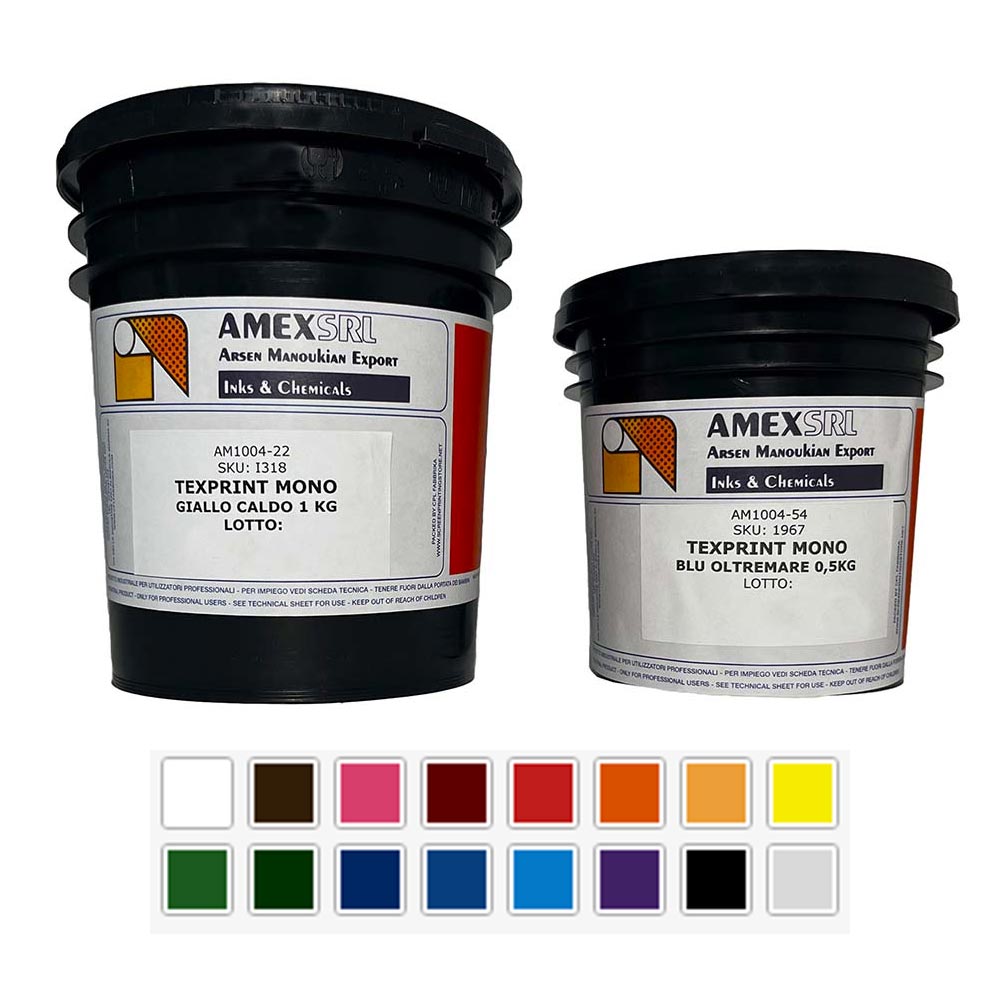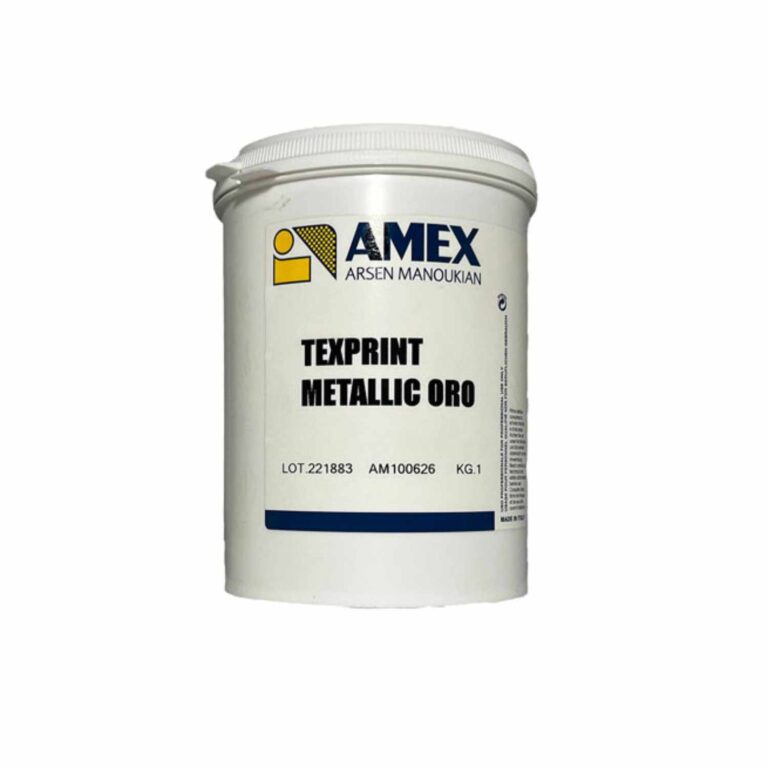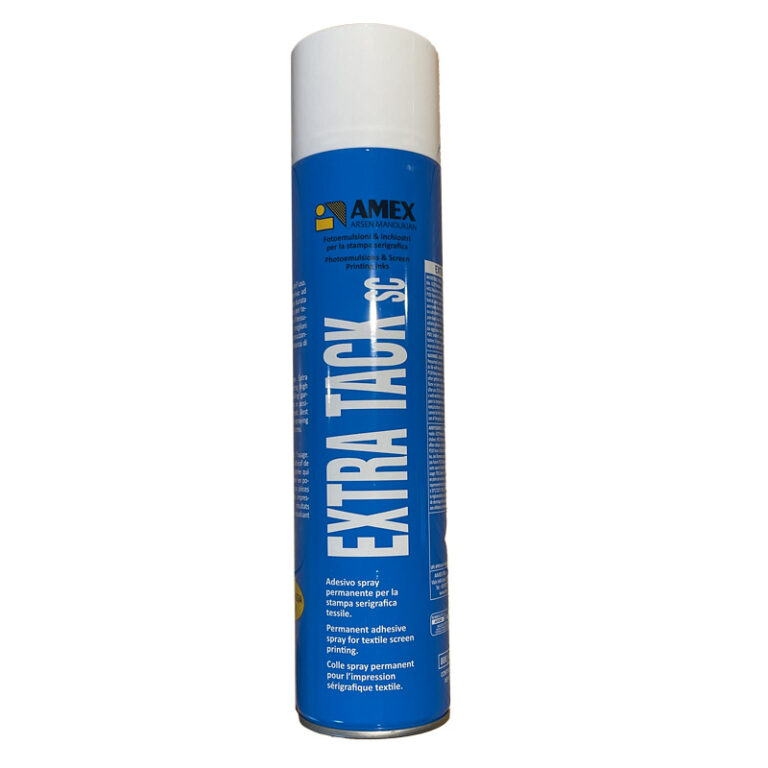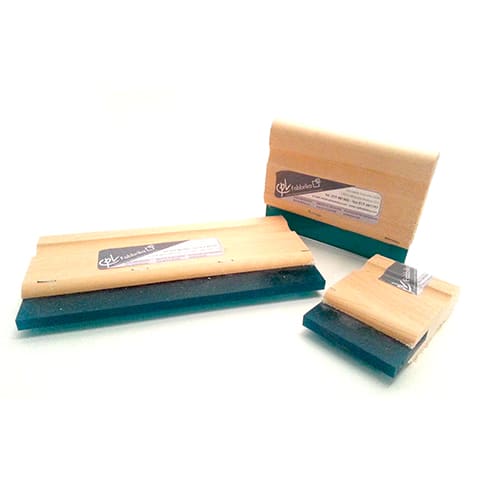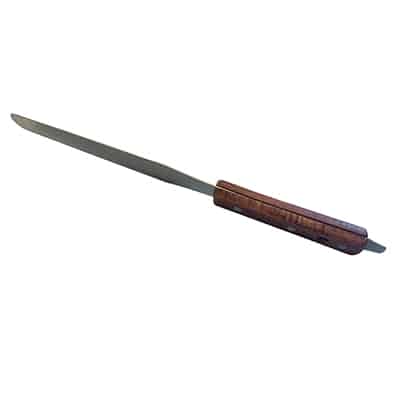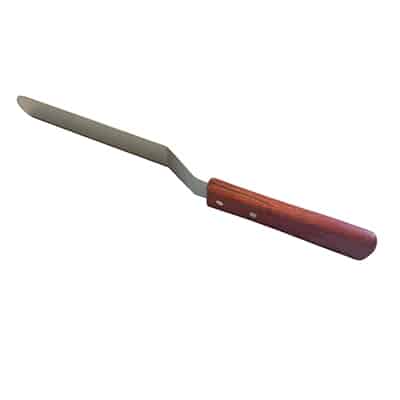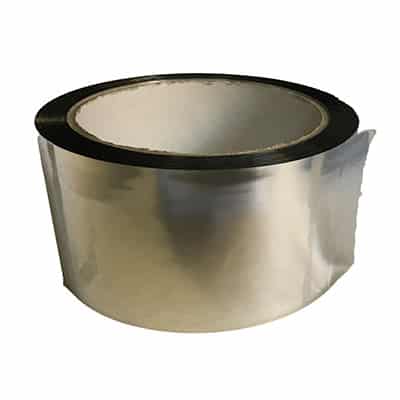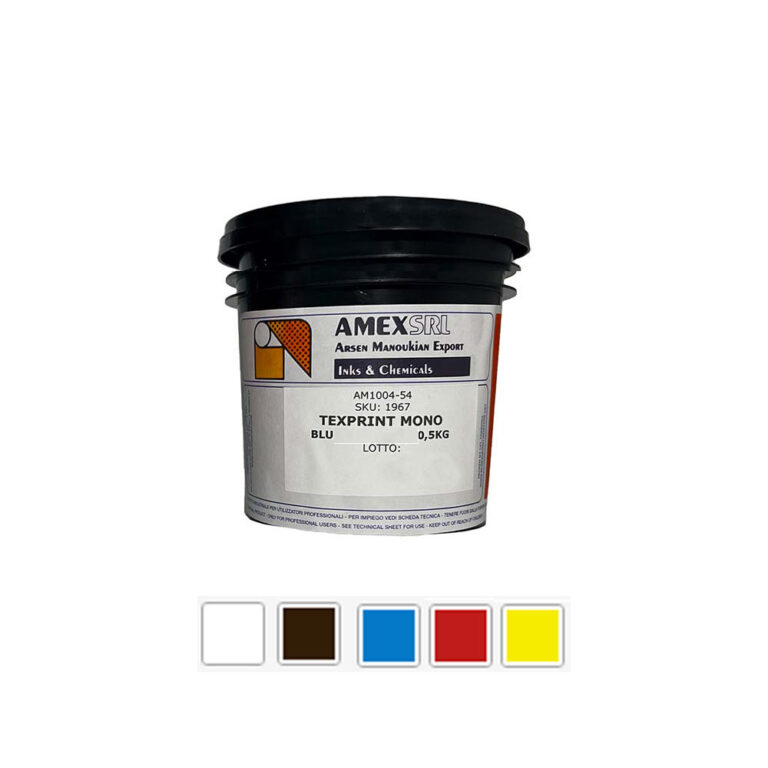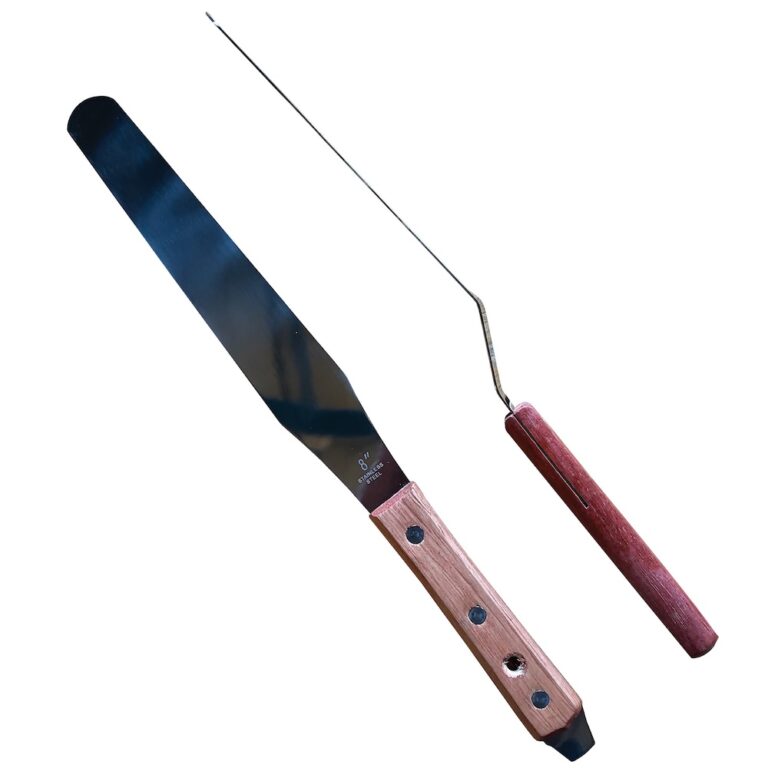Texprint Mono Amex water-based ink in 250 Gr, 0,5 Kg, 1 Kg and 5 kg pots.
To improve resistance to washing, we suggest using the Texprint universal catalyst.Hot air drying accelerates the drying process and improves resistance to washing.
We recommend only adding the catalyst to the portion of ink that’s going to be used, because the ink will become unusable within a couple of hours.
One of the key characteristics of the Texprint mono Amex ink is its excellent coverage. It’s ready for use and can be diluted with water.
Aquatech Texprint Mono Amex is autoreticulating and available in a variety of colours, it’s also ideal for dark backgrounds.
It’s resistant to washing even without oven drying.
Texprint mono Amex inks are ideal for fabrics which are unable to withstand high temperatures, or in situations where polymerising isn’t possible.
